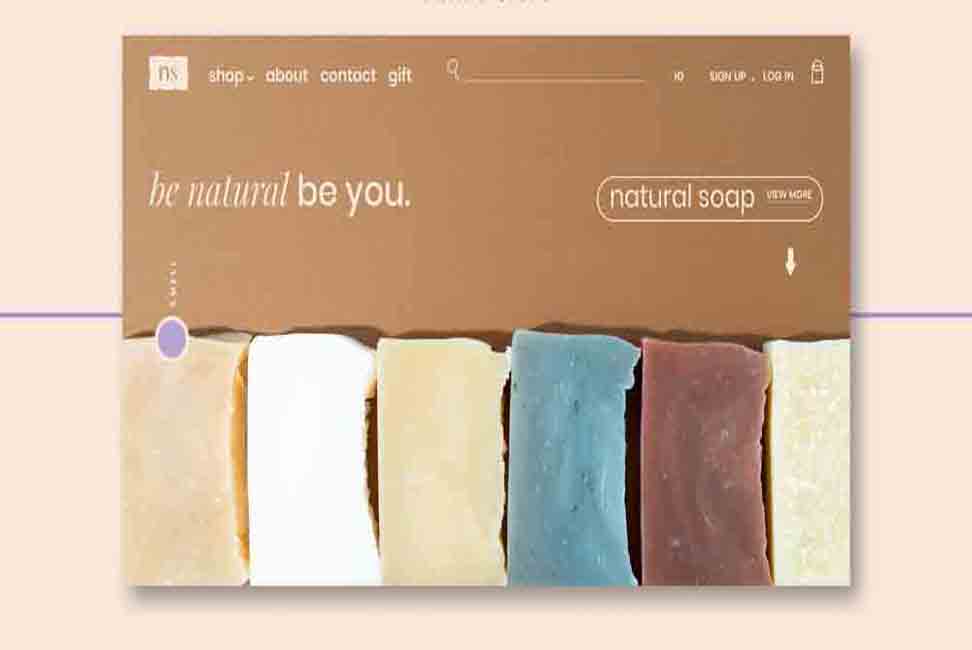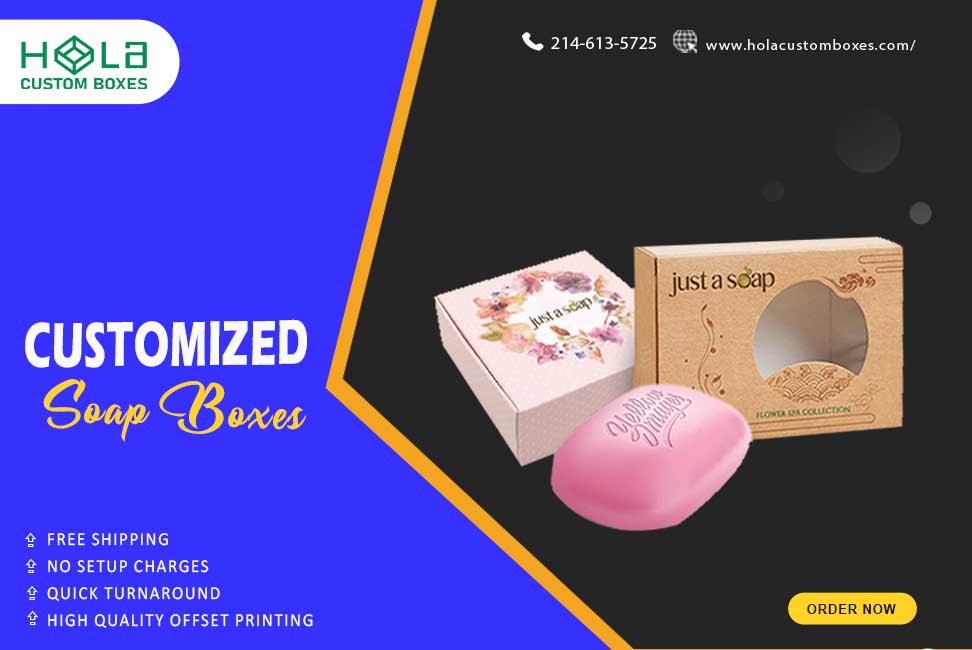The Complete Guide to Soap Packaging
2025-12-01 09:38:32
The Complete Guide to Soap Packaging: Everything You Need to Know
Soap packaging is an integral part of the product experience. It can create an impression of quality and value while providing a way to display and protect the product. For those seeking to make a lasting impression with their soap packaging, The Complete Guide to Soap Packaging offers the essential information and expert tips. This guide will help you choose the right materials and design features to create a package that meets your needs and stands out from the competition. With comprehensive coverage of all the key considerations, it’s the perfect resource for creating a practical and attractive soap package.
How vital is soap packaging for sales?
Soap packaging is very important for sales, as it helps to create a strong brand image and increase product recognition. It also helps to communicate product benefits and inform potential customers about the product. Packaging is often the first thing a customer sees, so it needs to be attractive and eye-catching to capture attention and ensure a positive response. Good packaging also helps protect the product and ensure it reaches customers in mint condition, which is essential for customer satisfaction.
What are the common types of soap packaging?
The most common type of soap packaging is custom soap boxes, which allow companies to create unique designs that reflect their brand image. Other popular types of packaging include custom soap bags, printed soap boxes, personalized soap boxes, and soap boxes. Additionally, eco-friendly options such as biodegradable soap packaging are becoming increasingly popular.
How to choose the proper soap packaging?
When choosing the right soap packaging, it is essential to consider the product’s purpose, target audience, and brand image. Packaging should be designed to reflect the product’s purpose, including features such as tamper-evident seals or moisture-resistant materials. It is also essential to consider the target audience and choose appropriate packaging. Finally, packaging should reflect the company’s brand image and values.
How does soap packaging affect the brand image?
Soap packaging is important in creating and maintaining a positive brand image. Packaging should be designed to reflect the company’s brand image and values, as well as the product’s purpose. Packaging should also be visually appealing and eye-catching to capture attention and elicit a positive response. Additionally, good packaging helps protect the product and ensure it reaches customers in mint condition, which is essential for customer satisfaction and a positive brand image.
What eco-friendly options are available for soap packaging?
There are several eco-friendly options for soap packaging, including biodegradable, recycled paper, and compostable materials. Additionally, companies can opt for minimal packaging, using only the necessary materials to protect the product. Finally, companies can choose to use eco-friendly inks and dyes, to reduce the environmental impact of their packaging.
What role does soap packaging play in product safety?
Soap packaging plays an important role in product safety, as it helps to protect the product from damage during transportation and handling. Packaging should be designed to ensure the product reaches customers in mint condition, as this is essential for customer satisfaction. Additionally, packaging should include features such as tamper-evident seals to ensure product safety and security.
How to design attractive soap packaging?
Designing attractive soap packaging requires creativity, knowledge, and experience. When designing packaging, it is essential to consider the product’s purpose, target audience, and brand image. Additionally, packaging should be eye-catching and unique to capture attention and ensure a positive response. Finally, using high-quality materials and eco-friendly inks and dyes is essential to ensure the packaging looks great and has a minimal environmental impact.
What are the latest trends in soap packaging?
The latest trends in soap packaging include minimal packaging, sustainable materials, and customized designs. Companies increasingly opt for minimal packaging, using only the necessary materials to protect the product. Additionally, eco-friendly materials such as biodegradable soap packaging, recycled paper packaging, and compostable materials are gaining popularity. Ultimately, companies develop customized designs that accurately reflect their brand image, values, and product purpose.
How to Make Your Soap Packaging Stand Out?
To make your soap packaging stand out, it is important to use unique and eye-catching designs. Additionally, packaging should be designed to reflect the company’s brand image and values, as well as the product’s purpose. Companies can also opt for custom shapes and sizes to create unique and memorable packaging. Finally, using high-quality materials and eco-friendly inks and dyes is important to ensure the packaging looks great and has a minimal environmental impact.
What are the most popular materials for soap packaging?
The most popular materials for soap packaging are cardboard, plastic, and paperboard. Cardboard is often used for custom soap boxes, as it is economical and can be customized with printing and other finishes. Plastic is an excellent choice for soap packaging as it is lightweight, durable, and moisture-resistant. Paperboard is also popular due to its lightweight nature, ease of printing, and recyclability.
How to reduce the cost of soap packaging?
Using lightweight materials such as plastic or paperboard to reduce the cost of soap packaging. It is also important to compare pricing across suppliers and place bulk orders to get the best price. Additionally, consider using generic packaging materials instead of custom soap boxes to save on costs.
What are the legal requirements for soap packaging?
The legal requirements for soap packaging vary by country and region. Generally, soap boxes must be labeled with the ingredients, instructions for use, and any legal warnings or disclaimers. The packaging must also be durable and tamper-proof.

How to create customized soap packaging?
You can use various materials such as cardboard, plastic, paperboard, and more to create customized soap packaging. You may also opt for printed soap boxes, personalized soap boxes, custom labels, and more. Additionally, you may consider incorporating a unique shape, color, or design.
What are the advantages of transparent soap packaging as Window Soap Boxes with PVC?
The advantages of transparent soap packaging include increased product visibility, which helps customers better understand the product’s features and benefits. Transparent soap packaging also allows customers to compare products, thereby increasing sales easily. This type of packaging typically features a die-cut window and a PVC cover.
How to use soap packaging to communicate product benefits?
To effectively use soap packaging to communicate product benefits, use clear, concise language to explain the product’s features and benefits. Additionally, you may use visual cues such as vibrant colors, attractive designs, and logos to draw attention to the product.
What are the most common mistakes in soap packaging design?
The most common mistakes in soap packaging design include using too many colors and fonts, inconsistent branding, insufficient product information, and a lack of customer-friendly design.
How to create soap packaging that is easy to use?
To create soap packaging that is easy to use, consider its shape, size, and weight. Additionally, ensure the packaging is easy to open, with no sharp edges or labels that are difficult to remove.
How to Incorporate Branding in Soap Packaging
Incorporating branding into soap packaging starts with consistency. Use your brand's logo, font, and color palette across all packaging materials. Opt for custom printed soap boxes or personalized labels that reflect your brand's personality. Additionally, unique packaging elements—such as die-cut windows, textured finishes, or distinctive box shapes—can help create a memorable unboxing experience and strengthen brand recall.
What Are the Different Sizes of Soap Packaging Available?
Soap packaging comes in various sizes to suit different uses and customer preferences. Common options include:
Single-use sachets – Ideal for samples or travel kits
Personal-sized bars – Standard for daily use
Half-bar and full-bar boxes – Popular retail options
Multi-packs – Great for value bundles or subscription boxes
Jumbo bars – Often used for gifting or premium product lines
Select sizes based on your target market and the intended usage of your product.
How to Make Soap Packaging More Sustainable
To enhance sustainability, consider using eco-friendly materials such as biodegradable kraft paper, recyclable cardboard, or plant-based plastics. Reduce waste by designing minimalist packaging that uses fewer materials. You can also print with soy-based or water-based inks, and avoid laminations or coatings that hinder recyclability. Reusable packaging or refill options can further support a sustainable brand image.
How to use soap packaging to increase customer loyalty?
Increasing customer loyalty through soap packaging can be achieved with custom soap boxes. Personalized boxes with the customer’s name and logo can be a great way to recognize customer loyalty and build relationships. Additionally, offering discounts or loyalty programs when customers purchase soap is another way to show appreciation.
How to Test Soap Packaging for Durability?
To test the durability of soap packaging, use a high-quality material that withstands normal wear and tear. Additionally, testing the packaging with various liquids, such as oil, water, and alcohol, can help determine the material's strength. Furthermore, subjecting the packaging to extreme temperatures, such as hot or cold conditions, can also impact its durability.
What are the benefits of using biodegradable soap packaging?
The benefits of using biodegradable soap packaging include reducing non-biodegradable waste, saving energy and resources, and reducing greenhouse gas emissions. Additionally, biodegradable packaging is not only good for the environment, but it can also be cost-effective and aesthetically pleasing.
How to create soap packaging for different target audiences?
To create soap packaging for different target audiences, it is essential to consider the unique needs of each group. For example, for a younger audience, bright, colorful packaging with fun designs may be most effective. On the other hand, for an older audience, a more sophisticated and elegant design may be more appropriate. Additionally, it is essential to consider the packaging's environmental impact to ensure it is sustainable.
How to measure the effectiveness of soap packaging?
To measure the effectiveness of soap packaging, it is necessary to analyze customer feedback, sales data, and industry trends. Additionally, conducting surveys and focus groups can provide valuable insights into customers' packaging preferences. Furthermore, tracking the number of packaging returns can help to understand the quality of the packaging.
How to design soap packaging for e-commerce?
. To design soap packaging for e-commerce, it is essential to consider factors such as shipping costs, package size and weight, and delivery method. Additionally, designing the packaging to be eye-catching and creative can help to promote the brand. Furthermore, ensuring the packaging is secure and adequately protects the product during shipping is essential.
What are the most creative soap packaging ideas?
Some of the most creative soap packaging ideas include using unique shapes, incorporating windows into the boxes, utilizing bright colors and interesting patterns, and employing eco-friendly materials. Additionally, using unique materials such as bamboo, cloth, or leather can make the packaging stand out. Furthermore, adding a story or message to the packaging can make it more memorable and engaging.
How to create soap packaging that is easy to transport?
It is important to use lightweight materials such as paper, cardboard, and plant-based plastics to create soap packaging that is easy to transport. Additionally, the package design should be both functional and straightforward, yet secure. Furthermore, adding handles or straps to the packaging can make it easier to carry.
What are the challenges in soap packaging for handmade soap?
The challenges in soap packaging for handmade soap include finding the right size and shape for the soap, ensuring the package is both secure and protective, and designing packaging that creatively and uniquely reflects the brand. Additionally, it is important to consider the cost of packaging materials and the packaging's environmental impact.
How to choose the right soap packaging supplier?
To choose the right soap packaging supplier, it is important to consider factors such as the quality of the materials, the cost of the packaging, the delivery time, and the supplier’s reputation. It is also important to ensure that the supplier complies with environmental regulations and standards. Furthermore, it is essential to read supplier reviews to ensure they provide good customer service.
